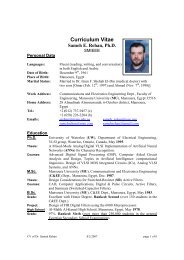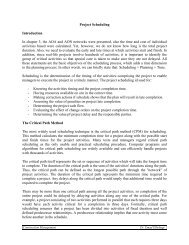Thyroid and Parathyroid
Thyroid and Parathyroid
Thyroid and Parathyroid
You also want an ePaper? Increase the reach of your titles
YUMPU automatically turns print PDFs into web optimized ePapers that Google loves.
stones (64 percent), bone disease (20 percent), peptic ulcer disease (12 percent), <strong>and</strong><br />
hypertension (4 percent). Walter St. Goar, in 1957, first used the mnemonic<br />
“Hyperparathyroidism is a disease of stones, bones, <strong>and</strong> abdominal groans” to remind<br />
physicians to consider this diagnosis in patients with varied complaints. With time,<br />
the triad of St. Goar has been extended to include other nonspecific regional<br />
symptoms of hypercalcemia pertaining to the abdomen, kidney, bone, constitutional,<br />
.( <strong>and</strong> neurologic manifestations (Fig. 36-47<br />
Over half of all patients diagnosed with primary hyperparathyroidism are<br />
asymptomatic, <strong>and</strong> the disease is discovered by routine serum chemistry analysis<br />
showing hypercalcemia. After successful surgical management of primary<br />
hyperparathyroidism, nearly all patients realize that they had in fact been<br />
. symptomatic<br />
Evaluation<br />
The diagnosis of primary hyperparathyroidism is most commonly one of exclusion. It<br />
is most commonly considered when serum chemistry analysis reveals hypercalcemia.<br />
A focused history in symptomatic <strong>and</strong> asymptomatic patients is important to rule out<br />
medicinal use that might cause hypercalcemia <strong>and</strong> obscure the diagnosis—most<br />
commonly thiazide diuretics, but also lithium <strong>and</strong> excessive ingestion of vitamin A or<br />
vitamin D. Consumption of extraordinary amounts of milk or antacids might alert the<br />
clinician to the diagnosis of the milk-alkali syndrome. Questions regarding renal<br />
failure, dehydration, immobilization, <strong>and</strong> Paget's disease can lead to identifying the<br />
cause of the hypercalcemia. Endocrine abnormalities such as adrenal insufficiency,<br />
<strong>and</strong> either hyperthyroidism or hypothyroidism are similarly rare causes of<br />
hypercalcemia. Granulomatous diseases such as sarcoidosis, tuberculosis,<br />
coccidiodomycosis, histoplasmosis, <strong>and</strong> berylliosis can elevate serum calcium levels.<br />
It is to critical to evaluate hypercalcemic patients for previous or current malignancy<br />
with possible bony metastases. The malignant causes of hypercalcemia include renal<br />
cell carcinoma, multiple myeloma, <strong>and</strong> squamous or small cell lung cancer. Over 90<br />
percent of patients with hypercalcemia have primary hyperparathyroidism or<br />
malignancy, most commonly metastatic from the prostate or breast, as the source of<br />
. their elevated serum calcium levels<br />
A family history of multiple endocrine neoplasia or benign familial hypocalciuric<br />
hypercalcemia (BFHH) is critical. MEN <strong>and</strong> BFHH usually occur in younger patients<br />
with a known genetic predisposition. BFHH involves sufficient retention of calcium<br />
to cause hypercalcemia. Unlike patients with primary hyperparathyroidism, BFHH<br />
patients have unusually low urinary calcium excretion. Cervical exploration in these<br />
. patients is of no benefit <strong>and</strong> is contraindicated<br />
Physical examination of patients with primary hyperparathyroidism is rarely of<br />
diagnostic aid, but it is important to assess for neck masses, voice abnormalities or<br />
hoarseness, cervical lymphadenopathy, <strong>and</strong> mobility of the cervical spine. Neck<br />
masses most commonly represent benign thyroid nodules but could be the rare<br />
parathyroid cancer. Hypercalcemia coupled with a firm cervical mass with hoarseness<br />
or a recent change in voice would indicate involvement of a recurrent laryngeal nerve<br />
secondary to this rare malignancy. As a corollary, parathyroid adenomas, regardless<br />
of their size, are rarely palpable. While cervical lymphadenopathy can be observed<br />
with parathyroid carcinoma, this finding would more likely represent a recent upper

















